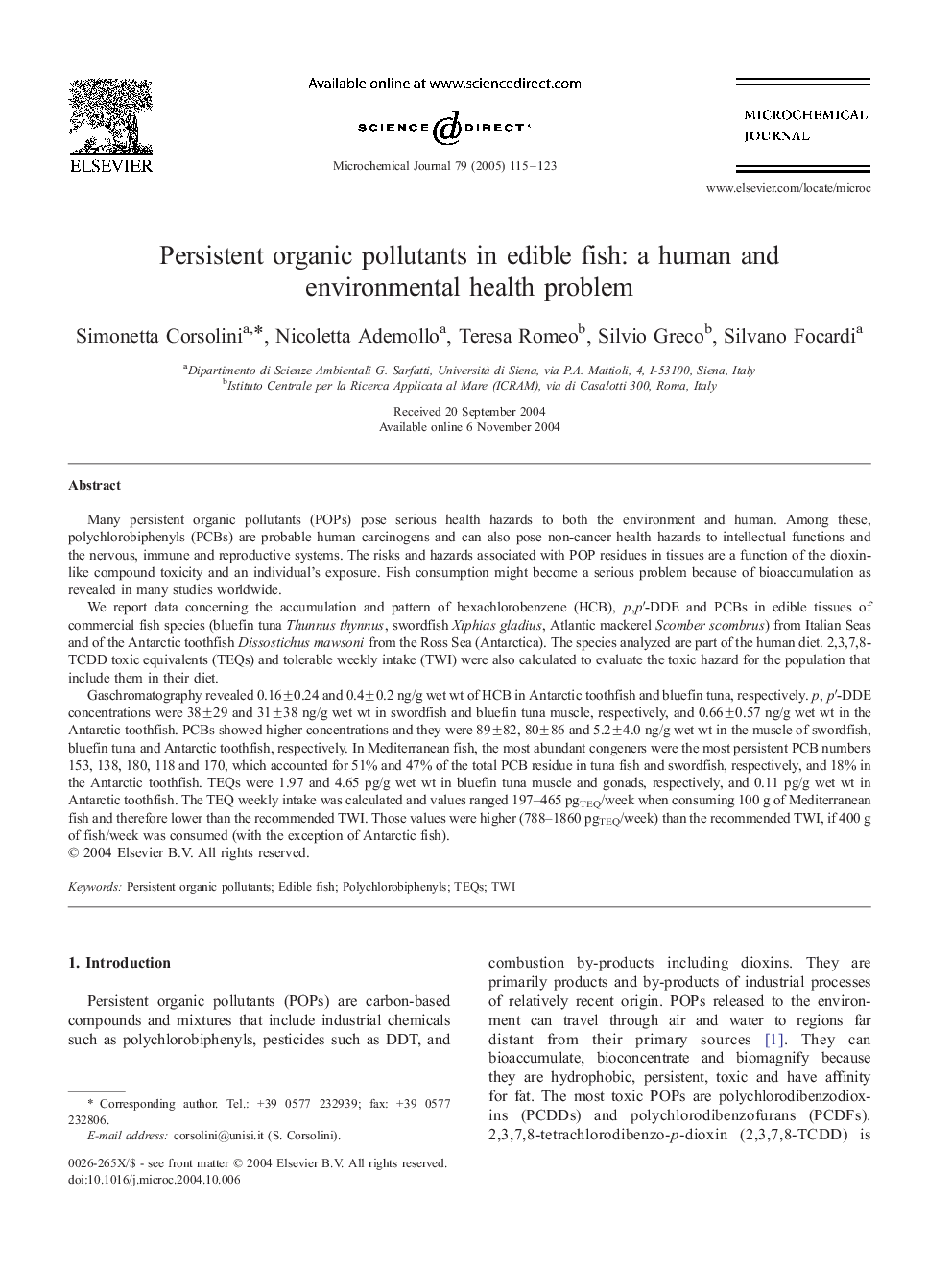| Article ID | Journal | Published Year | Pages | File Type |
|---|---|---|---|---|
| 9755025 | Microchemical Journal | 2005 | 9 Pages |
Abstract
Gaschromatography revealed 0.16±0.24 and 0.4±0.2 ng/g wet wt of HCB in Antarctic toothfish and bluefin tuna, respectively. p,pâ²-DDE concentrations were 38±29 and 31±38 ng/g wet wt in swordfish and bluefin tuna muscle, respectively, and 0.66±0.57 ng/g wet wt in the Antarctic toothfish. PCBs showed higher concentrations and they were 89±82, 80±86 and 5.2±4.0 ng/g wet wt in the muscle of swordfish, bluefin tuna and Antarctic toothfish, respectively. In Mediterranean fish, the most abundant congeners were the most persistent PCB numbers 153, 138, 180, 118 and 170, which accounted for 51% and 47% of the total PCB residue in tuna fish and swordfish, respectively, and 18% in the Antarctic toothfish. TEQs were 1.97 and 4.65 pg/g wet wt in bluefin tuna muscle and gonads, respectively, and 0.11 pg/g wet wt in Antarctic toothfish. The TEQ weekly intake was calculated and values ranged 197-465 pgTEQ/week when consuming 100 g of Mediterranean fish and therefore lower than the recommended TWI. Those values were higher (788-1860 pgTEQ/week) than the recommended TWI, if 400 g of fish/week was consumed (with the exception of Antarctic fish).
Related Topics
Physical Sciences and Engineering
Chemistry
Analytical Chemistry
Authors
Simonetta Corsolini, Nicoletta Ademollo, Teresa Romeo, Silvio Greco, Silvano Focardi,
